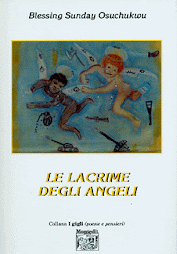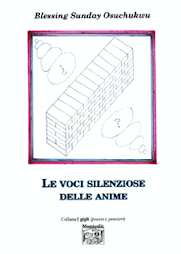What you Need to Know
The Italian school system is offered free to all children in Italy regardless of nationality. All children are required to attend school from age six through sixteen with the compulsory age limit being raised over the next couple years. Even the public nursery schools are free with reasonable sized classes and motivated teachers. The school system has a good reputation but tends to focus on rote memorization and obedience over creativity.
"Scuola elementare", or primary school, begins at age six and continues for five years. Class sizes generally run about twenty five children per class with a minimum of ten students. "Pluriclassi", or mixed-level classes, have between six and twelve students. Schooling and textbooks are free. Municipalities manage transportation and school meals, most often asking for contributions but making exceptions for needy families. The curriculum includes: Italian, English, Geography, History, Math, Science, Technology, Music, Art, Physical Education, Information Technology and Catholicism.
The next level formerly known as "scuola media" is now known as "scuola secondaria di 1 grado", secondary school level one, where students study until they turn fourteen years old. Formerly at age fourteen, compulsory education was considered complete. This limit has been raised to sixteen and will continue to be raised in increments until the 2007/2008 school year. While the schooling is free, books must be purchased at the secondary level. Class size is about 21 students per class. The curriculum includes: religion, Italian, English, an alternate foreign language, history, geography, science, math, technology, information technology, art, music and physical education.
Students must take and pass an exam before moving up to "scuola secondaria superiore" or "liceo", higher secondary school. Higher secondary school lasts five years until the student is eighteen or nineteen years old. The higher secondary schools are voluntary. Students must make a choice about their education at an early age and choose the higher secondary school they will attend. Each higher secondary school is broken down by subject matter such as:
liceo scientifico (scientific)
liceo classico (classic)
liceo linguistico (language)
istituto magistrale (school for teachers)
istituto tecnico (technical school)
istituto professionale (professional school)
The art schools are further divided into:
liceo artistico (artistic high school)
istituto d'arte (art school)
accademia di danza (dance academy)
conservatorio di musica (conservatory of music)
accademia nazionale d'arte drammatica (national academy of dramatic arts). Once the student has chosen his or her field of study, they are rarely allowed to change their minds.
Class sizes are between twenty five to twenty eight students in higher secondary school. Higher secondary schools do charge tuition. However, based on family income, some students may qualify for exemptions or assistance. Curriculum varies depending on the course of study chosen.
After completing the higher secondary school, students must pass another exam in order to receive their "Diploma di Maturità". Once they have their diplomas, they either begin their careers in their professions or move on to the University.
Italy has forty two state universities, six private universities, three technical universities and twelve specialized university institutes. Each university offers four main courses: "diploma universitario" (university diploma), "Diploma di Laurea" (Bachelor of Arts/Science), "Dottorato di Ricerca" (research doctorate), and "Diploma di Specializzazione" (diploma of specialization).
(By Celeste Stewart)
Religion in Italy
Italy is a prevalently Roman Catholic country, with minorities of Muslims (mostly from recent immigration) and Jews. Christian Protestants are historically few, due to a history of intolerance that has continued until modern times. A few Protestants, such as two-time Prime Minister Sidney Sonnino, have distinguished themselves.
The 97.67% of Italians are baptized according to the rite of the Catholic Church. According to a survey of Eurispes 2006, 87.8% of the population declares itself Catholic and 36.8% practitioner. However a large percentage of Catholics do not necessarily support all the directions of the Church, as demonstrated by the referendum about divorce or abortion.
In Italy in 2006 there were 53 millions of Christians, 1,210,00 Muslims, 160,000 Buddhists, 115,000 Hinduists, 70,000 Sikhs, 45,000 Hebrews, 15,000 Pagans, and 4 millions of Atheists and Agnostics.
The Catholic Church holds considerable power and has an influence on most political parties, with the exceptions of the Italian Radicals and the Communist Refoundation Party.
Usage of Catholic symbolism (especially crosses) in courts and schools has been contested by minorities, but was ruled legal; many contend that it is in clear violation of the principles of religious freedom outlined in the Constitution of Italy. It is claimed that the Crucifixes and other Catholic symbols are not considered by the supreme court religious signs but cultural symbols.
Articles in the Constitution of Italy about freedom of religion
3: All citizens have equal social dignity and are equal before the law, without distinction of [...], religion, [...]
8: All religious confessions are equally free before the law.
19: All have the right to profess freely their own religious faith in whatever form [...], provided that the rites are not contrary to morality.
(From Wikipedia)
martedì 16 settembre 2008
Iscriviti a:
Commenti sul post (Atom)























2 commenti:
perchè tutti sempre dimenticano il Liceo Artistico? perchè????
uffa......
:(
[ovviamente indovina quale liceo io ho frequentato?]
:))
Cara Bibi,
Ma come faccio a dimenticarti..... Ci stava ma forse non hai guardato bene, è proprio il primo sotto il sub titolo in evidenza: "The art shools are further divided into:"
E quando ho guardato l'ora in cui hai lasciato il commento....mi sono detto ecco perché!:-))
Posta un commento